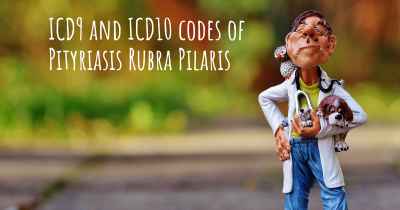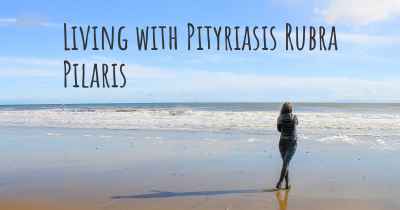Is there any natural treatment for Pityriasis Rubra Pilaris?
Are there natural treatment(s) that may improve the quality of life of people with Pityriasis Rubra Pilaris? Here you can see if there is any natural remedy and/or treatment that can help people with Pityriasis Rubra Pilaris

Is there any natural treatment for Pityriasis Rubra Pilaris?
Pityriasis Rubra Pilaris (PRP) is a rare and chronic skin disorder characterized by reddish-orange scaly patches, follicular plugging, and keratotic follicular papules. It can be a challenging condition to manage, and while there is no known cure, there are natural treatment options that may help alleviate symptoms and improve the overall quality of life for individuals with PRP.
1. Moisturize Regularly
Keeping the skin well-moisturized is crucial for managing PRP. Use emollient-rich moisturizers that help lock in moisture and prevent excessive dryness. Look for products containing ingredients like shea butter, coconut oil, or hyaluronic acid. Apply moisturizer multiple times a day, especially after bathing or showering, to help soothe and hydrate the skin.
2. Avoid Triggers
Identifying and avoiding triggers that worsen PRP symptoms can be beneficial. Common triggers include stress, certain medications, extreme temperatures, and certain fabrics. By minimizing exposure to these triggers, you may be able to reduce the severity and frequency of flare-ups.
3. Use Natural Anti-Inflammatory Agents
Several natural ingredients possess anti-inflammatory properties that may help manage PRP symptoms. These include:
- Aloe Vera: Apply pure aloe vera gel to the affected areas to soothe inflammation and promote healing.
- Turmeric: Incorporate turmeric into your diet or apply a paste made from turmeric powder and water directly to the skin. Turmeric contains curcumin, a compound known for its anti-inflammatory effects.
- Oatmeal: Taking oatmeal baths or applying oatmeal-based creams can help relieve itching and inflammation.
- Chamomile: Use chamomile tea bags soaked in warm water as a compress to reduce inflammation and soothe irritated skin.
4. Sun Protection
Protecting your skin from the sun is crucial when managing PRP. Sun exposure can worsen symptoms and increase skin sensitivity. Use a broad-spectrum sunscreen with a high SPF (30 or above) and wear protective clothing, such as long sleeves and hats, when outdoors.
5. Stress Management
Stress can exacerbate PRP symptoms, so it's important to find effective stress management techniques. Consider incorporating activities such as yoga, meditation, deep breathing exercises, or engaging in hobbies that help you relax and reduce stress levels.
6. Dietary Modifications
While there is no specific diet for PRP, making certain dietary modifications may help improve overall skin health. Focus on consuming a balanced diet rich in fruits, vegetables, whole grains, and lean proteins. Avoid processed foods, excessive sugar, and foods that may trigger inflammation in some individuals, such as dairy or gluten.
7. Natural Supplements
Some natural supplements may have potential benefits for individuals with PRP. However, it's important to consult with a healthcare professional before starting any new supplements. Some supplements that may be considered include:
- Omega-3 fatty acids: Found in fish oil or flaxseed oil, omega-3 fatty acids have anti-inflammatory properties that may help reduce skin inflammation.
- Vitamin D: Adequate levels of vitamin D are essential for skin health. Consult with a healthcare professional to determine if vitamin D supplementation is necessary.
- Probiotics: Probiotics help maintain a healthy gut microbiome, which can indirectly impact skin health. Consider incorporating probiotic-rich foods or supplements into your routine.
It's important to note that while these natural treatments may provide relief for some individuals with PRP, they may not work for everyone. PRP is a complex condition, and it's essential to consult with a dermatologist or healthcare professional for an accurate diagnosis and personalized treatment plan.








